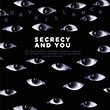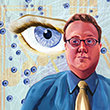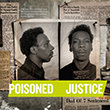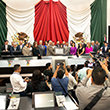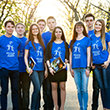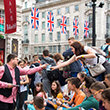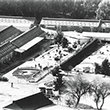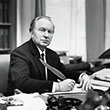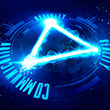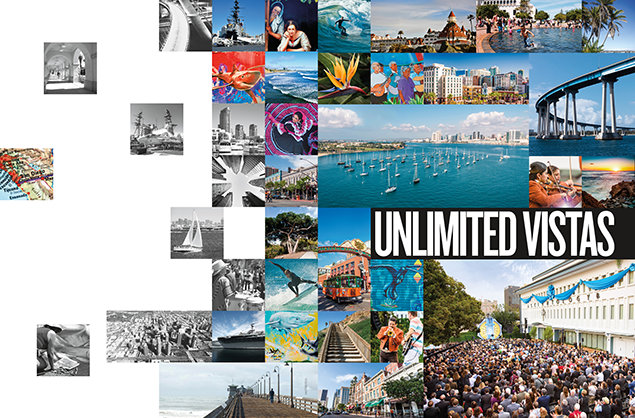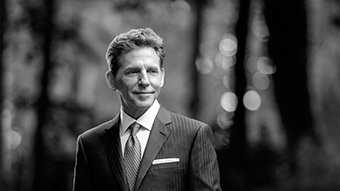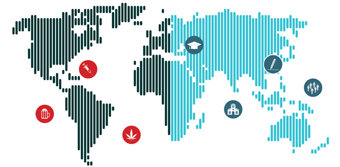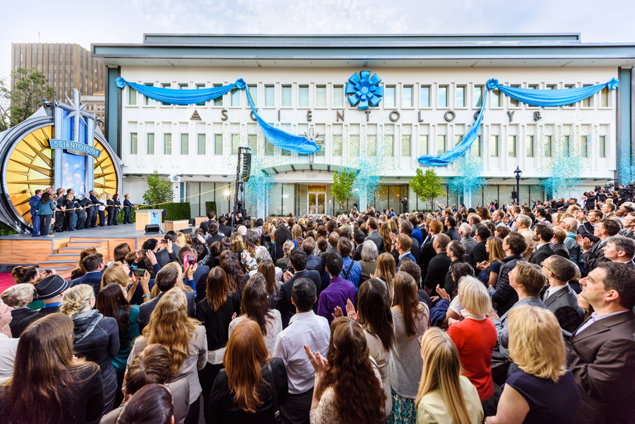
San Diego is the very southwest tip of the American Southwest, a city hallmarked by surfboards, taco trucks, Pacific commerce, 50 U.S. Navy warships, and sun and sand in abundance. It’s a city with a 15-mile border with Tijuana, Mexico. It’s where Beach Boys surfing tunes, mariachi guitars and trumpets, and hip-hop merge into a binational, multicultural symphony.
It’s also a strategic dual-national metropolis offering everything from spectacular tourism and economic opportunities to the depths of human degradation in drug smuggling and human trafficking.
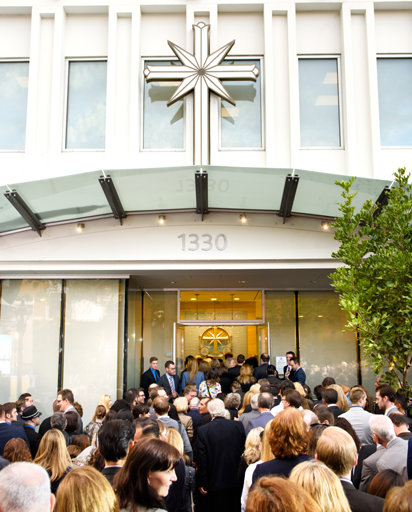
Stretching from Broadway to Market Street between Fourth and Sixth Avenues, the Gaslamp District of downtown San Diego features numerous landmarks of historical, architectural and cultural value, including an “international restaurant row” that is a major tourist attraction. It’s also a religious city—after all, even San Diego’s Major League Baseball team, the Padres, boasts a moniker connoting religion.
And, among the religions that enhance and embroider the fabric of San Diego, one stood out on a balmy Saturday, November 19, 2016: Scientology, whose new Church opened in the heart of the city, just a stone’s throw from the dazzling sea.
Why did 3,500 Scientologists and friends—including a force of more than 1,100 parishioners who contributed for the facility—gather on that day? Yes, it was about having a new Church, gleaming and modern, where Scientologists could advance along the religion’s spiritual path, the Bridge to Total Freedom.
But it was more than that. Like all of the other 50-plus new Scientology Churches across the globe, San Diego’s is a community hub, a gathering point to organize and strategize solutions to society’s deepest problems.
As Mr. David Miscavige, ecclesiastical leader of the Scientology religion, said in dedicating the new Church at the grand opening: “This Church of Scientology stands for literacy in schools, for crime- and drug-free streets, for prosperity in the workplace and human rights wherever else people walk.”
HUMAN HISTORY
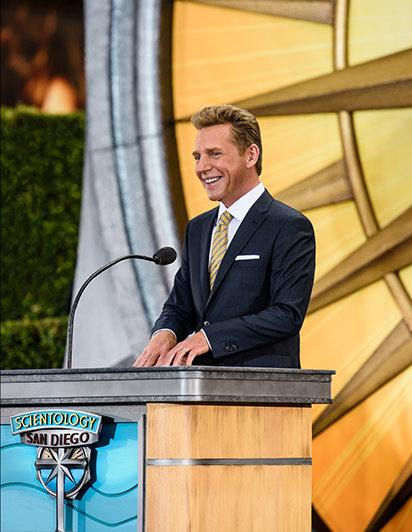
The Scientology religion tracks its origins to the middle of the 20th century, evolving from L. Ron Hubbard’s discoveries of Dianetics. San Diego has had a place in that saga from almost the very first days. And part of that story is embodied in Margee McCormick, one of the individuals Mr. Miscavige cited at the grand opening for helping the San Diego Church become reality.
In 1950, Margee’s husband-to-be, John McCormick, gave her a copy of Dianetics: The Modern Science of Mental Health, the seminal book by Scientology Founder L. Ron Hubbard. Margee, now 90, remembers when LRH—as Mr. Hubbard is widely known—spoke to a packed Los Angeles auditorium in August 1950. “Fantastic,” she recalls. “I got my own copy of Dianetics. I even remember what John and I had for dinner—it was Mexican and a Bacardi cocktail.”
One of the most famous photographs of LRH was taken at that August event. He was demonstrating auditing—as Dianetics counseling is known—with Margee. “It was real affinity, reality and communication,” she says, referring to the three ingredients in interpersonal relationships defined in Dianetics and Scientology.
Four years later, the McCormicks were among the founding members of the city’s first Scientology Church and the movement’s expansion in the greater San Diego area.
Julianne Fulton, the San Diego Church’s deputy executive director, gives a warm laugh applauding Margee. “There are many, many Scientologists in the San Diego area,” Fulton says, referring especially to those who started during the Church’s first few decades. “They’ve all been coming in. Large numbers of them, sometimes even more than the general public who drop in at the Church now that it’s open.”
In the weeks after the Church’s inauguration, says David Meyer, its public executive secretary, it has often been packed by visitors. Some, he says, have became so interested in what the Church offers—through the many audiovisual displays that explain Scientology, Dianetics and LRH’s life, as well as the Church’s humanitarian endeavors—that they now work there as members of the staff.
IN THE RIGHT PLACE
The San Diego Church—like all Scientology Churches opened in the last decade—has a special role originally defined by LRH in 1970. He wrote that the ideal Church of Scientology would be “an activity where people came to achieve freedom and where they had confidence they would attain it.”
LRH stated that anyone who looked at one of the facilities would “know that this was the place a new civilization was being established for this planet.”
At the grand opening, Mr. Miscavige spoke of the Church’s purpose to make that vision a reality through LRH’s legacy. “If ever was a day when ‘California Dreaming’ assumed a whole new meaning it is now,” he said, adding that this Church is dedicated “in the name of our Founder and in honor of this city where he once lived. And thus, we pledge our commitment to employ his technology for life—broadly, unsparingly and indiscriminately for this ‘Finest City in America.’”
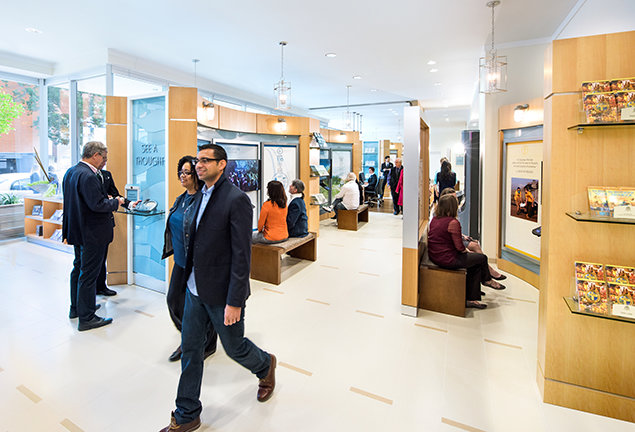
The San Diego Church embodies that sweeping commitment. The new four-story Church is on the site of a three-story building that had housed the Church since 1996. But just about everything inside, from the floors and elevators to the lighting and heating, was gutted and the structure transformed over an 18-month period. A fourth floor was added, boosting the building’s square footage from 30,000 to 50,000.
As a result, while the footprint remains unchanged, the building, facing bustling Fourth Avenue, appears much bigger than before. The extra space was badly needed. “We have more community partners reaching out and wanting help so that our humanitarian campaigns can deliver,” explains Denise Meyer, the Church’s executive director, referring to programs such as The Truth About Drugs and the Citizens Commission on Human Rights (CCHR), a Church-affiliated nonprofit that exposes human rights violations in the field of mental health. “So we needed spaces to hold meetings with our community partners, to be able to host events and activities.”
The San Diego Church’s expansion mirrors the high-volume growth and triumphs of Scientology. This Church is the 55th to open in recent years as part of a planetary network in cities ranging from London and Milan to Tel Aviv and Tokyo.
Gerri Fischman, a long-term executive of the San Diego Church of Scientology, describes the essence of the new Church: It’s akin to “walking into a place where you instantly know you are going to get the finest service,” she says. “The Church exudes that feeling.”
The Church’s interiors glow with tones of soft beige, yellow and tan, suggestive of beaches, sand, sun and water. The comforting palette is a familiar symbol of California’s second-largest city, which spans the eras of this southwest US corner under Spain, Mexico and the United States.
The most striking aspect of the new Church isn’t so much that it stands out architecturally, which it clearly does. Rather, just as the Ideal Church is the perfect reflection of the religion’s principles and practices, it is also an integral part of the San Diego scene. As David Meyer puts it: “It’s aesthetic, but not because it’s different. It’s aesthetic because it’s in the right place.”
BEACHHEAD
As a border town and America’s gateway to the Asia Pacific, San Diego has its share of problems, including crime and drugs. The Church’s well-documented contributions to fighting those scourges were the focus of community leaders at the opening ceremony—each championing humanitarian crusades in partnership with the Church.
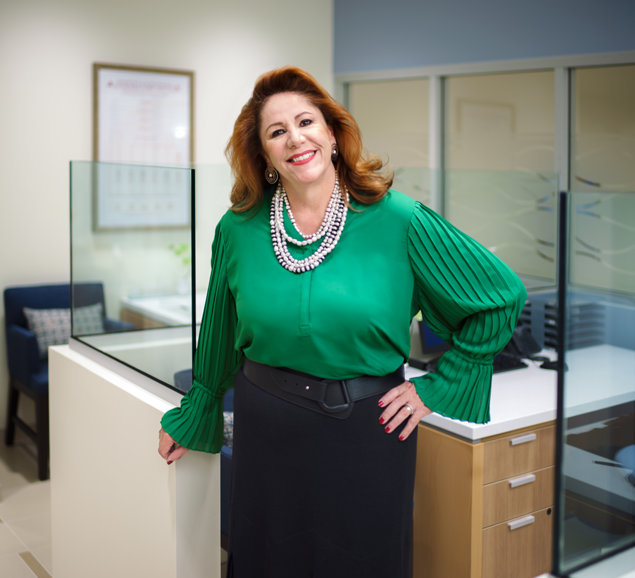
“You have to realize, without your materials our parents wouldn’t stand a chance. Because of The Way to Happiness I am a better parent, a better teacher, a better community leader and my job is that much easier. We just don’t have these types of programs. No one does.”
Beatriz Villarreal, an education advisor to the County of San Diego, remarked that the Church’s efforts to bring the common sense precepts of The Way to Happiness booklet into the lives of youth have worked wonders in tackling juvenile delinquency. While conducting a pilot study in San Diego’s juvenile hall, Villarreal said she realized that the only way many Latino youths could ever hope to achieve the American Dream was if they grew up being taught about values, traditions, discipline and responsibility in their homes.
“We have to reach into homes and talk to the parents and the kids,” Villarreal told the crowd. She has worked in the Latino community for nearly 30 years to educate parents and children in an effort to reduce juvenile delinquency. When she hands The Way to Happiness booklets to parents, she tells them: “You have in your hands gold.” The booklets restore the self-esteem of youth, which, in turn, “gives them the power to find their own way … to be leaders who take ownership in their community,” Villarreal explained.
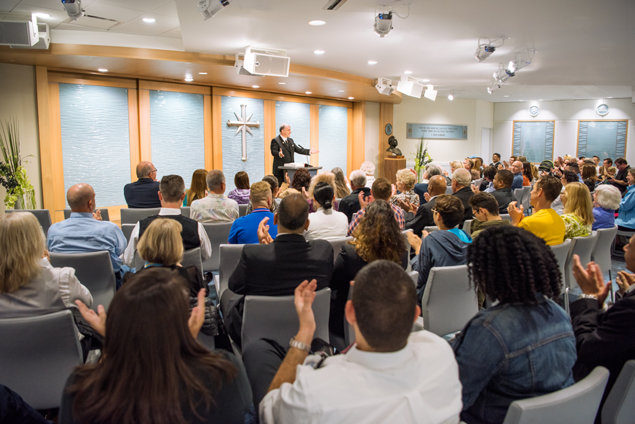
A Church capable of outreach from the southernmost reaches of California’s Gold Coast north to Orange County is a critical answer to the region’s formidable challenge of drug trafficking, per John Redman, director of the High Intensity Drug Trafficking Areas Program.
“This stretch of the border is one of the heaviest drug trafficking areas in the nation,” Redman said. “And despite the odds, we have made progress through educating our children on the harms of illicit drugs, which is so vital in stemming the tide of drug abuse.
“Let’s face it,” Redman continued, citing the Church’s work, “there aren’t enough organizations dedicated to this challenge. Whenever there’s a challenge, you always say, ‘We can do it. We have to.’ … You’re talking about an organization with an established system—a global network that makes incredible change possible.”
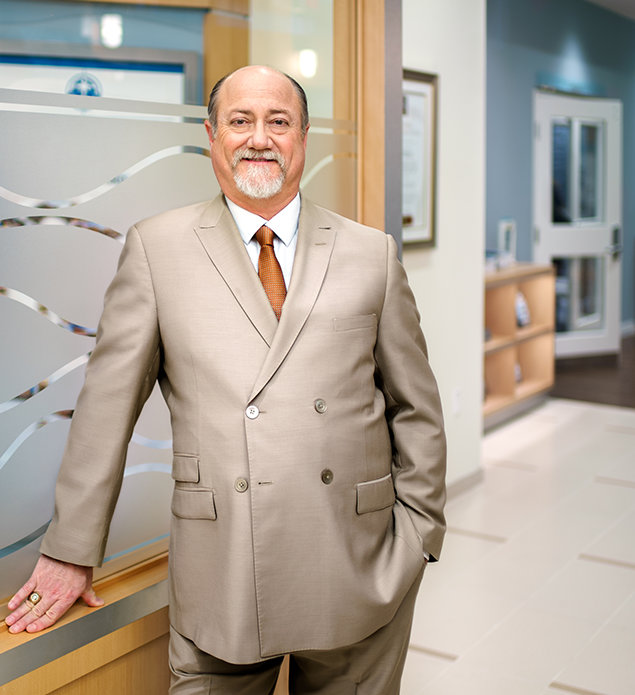
“This stretch of the border is one of the heaviest drug trafficking areas in the nation. Let’s face it, there aren’t enough organizations dedicated to this challenge. Whenever there’s a challenge, you [the Church] always say, ‘We can do it. We have to.’ … You’re talking about an organization with an established system—a global network that makes incredible change possible.”
The Church’s role in promoting human rights was highlighted by Estela De Los Rios, a member of the National Steering Committee on Human Trafficking and a noted local civil rights leader for the past 40 years. “Hate crimes are significantly high here in San Diego, [where] there are 66 hate groups identified,” she said, explaining that it was initially her activism against racism that brought her in contact with Scientology.
“In my community, we didn’t have ways to actually learn our rights,” De Los Rios said. “And you not only bring a very valuable toolkit—it’s phenomenal what’s in there,” she added, referring to the Church’s human rights campaign materials, which include information kits, education packages, DVDs and booklets.
“In this world, with all the news headlines and chaos, we need all the help we can get,” De Los Rios said. “And I thank you for keeping human rights in the minds and souls of the people. Because only if we love, embrace and be respectful to each other can we have human rights everywhere. For me, the real heroes are people like you here today—the Church of Scientology.”
“In this world, with all the news headlines and chaos, we need all the help we can get. And I thank you for keeping human rights in the minds and souls of the people. Because only if we love, embrace and be respectful to each other can we have human rights everywhere. For me, the real heroes are people like you here today—the Church of Scientology.”
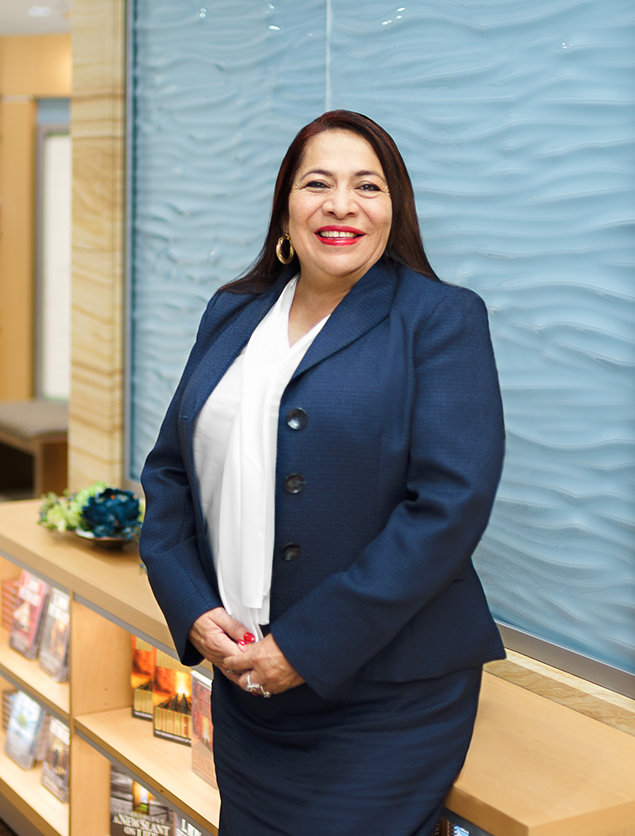
The San Diego Church is also set to play an important role in helping educate the public about the dangers of psychotropic drugs, said Bart Billings, a retired colonel from the U.S. Army’s Medical Service Corps. Pointing out that although San Diego is home to 80,000 military personnel and that “this city has an entire military ecosystem,” it is not immune to a national epidemic of psychotropic drugs, facilitated by psychiatrists who overprescribe these medications.
“Every day 22 military veterans end their lives,” Billings said, adding that the Church is “the only organization in the world which is fighting the fight against the big pharmaceutical companies and the psychiatric industry.” He praised the work done by CCHR, calling for an expansion of the organization’s “already worldwide foothold” to create “more contact points [for] raising awareness about psychiatric abuse.”
With this new Church, he concluded, “you are placing a beachhead here in San Diego.”
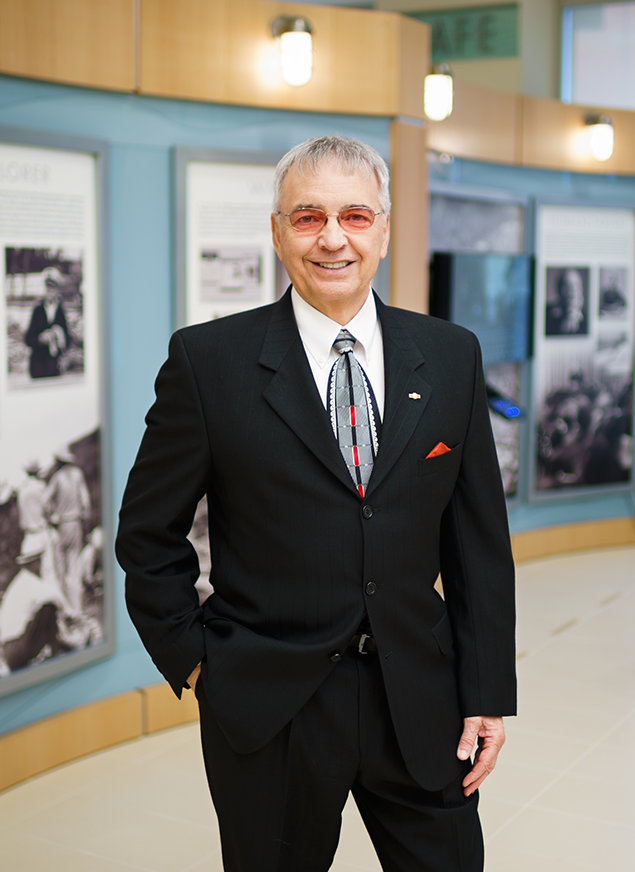
“Yours is the only organization in the world which is fighting the fight against the big pharmaceutical companies and the psychiatric industry—an industry that is destroying people’s lives with these drugs. The more contact points we have, raising awareness about psychiatric abuse, the better off our populations will be. You are placing a beachhead here in San Diego—one that can, and will, bring help and support to our troops.”
SPECIAL LEGACY
Through the years after San Diego became one of Scientology’s earliest outposts, Mr. Hubbard kept close tabs on the city and its Scientologist community. But he already had a long history with the city, having first lived in San Diego at age 9, when his father, a Navy officer, was assigned there. Later, as a teen, he sailed twice to Asia from the San Diego harbor—the second time boarding the USS Henderson carrying nothing but “two handkerchiefs, two suits, one pair shoes … one toothbrush, two pair socks and two pennies,” according to his diaries.
He also launched his prolific fiction writing career in San Diego, fondly recalling the city as a “never-never land,” his home as a “cottage up on the cliff” near the Presidio.
As he would tell San Diego Church staff in a special message in 1978, “That’s not just your San Diego. That’s my San Diego too. And I want you to take good care of it.”
A framed black-and-white portrait of a smiling Mr. Hubbard graces the front entrance of all Scientology Churches, and there’s something special about the aura around the photograph at the San Diego Church. It could of course be the lighting that creates such an impression. Or it could be that the spirit of his life and legacy is imbued in “The Plymouth of the West,” as San Diego is nicknamed.
For the Scientologists of San Diego at the recent grand opening, Mr. Miscavige reaffirmed that spirit in evoking LRH’s special message to the Church: “What this city ultimately came to mean is exactly what LRH told you all those years ago—that your vistas are unlimited, that an awful lot can be done with Scientology in San Diego.”

